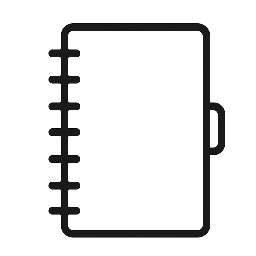Lawncare services focus on maintaining and improving the health, appearance, and value of outdoor spaces. They include tasks such as mowing, fertilizing, weed control, and aeration to ensure a well-kept lawn year-round. Regular lawncare services help prevent common issues like patchy grass and pest infestations while promoting strong, green growth.
Many homeowners and businesses choose professional lawncare providers to save time and achieve consistent results. These services can be customized to meet specific needs based on climate, soil type, and grass species. Understanding what lawncare services offer helps individuals decide the best approach for their property’s upkeep.
Essential Lawncare Services
Maintaining a healthy lawn requires consistent care focusing on cutting, nutrition, weed management, and soil health. These tasks each play a vital role in the overall appearance and durability of the turf.
Mowing and Edging
Regular mowing is critical to lawn health. Cutting grass to the appropriate height promotes root growth and prevents stress. Most grasses should be kept between 2.5 and 3.5 inches tall.
Edging sharpens the lawn’s boundaries, creating a clean and defined look. It also prevents grass from encroaching on flower beds, sidewalks, and driveways.
Proper mowing techniques include changing the blade height with seasons and never removing more than one-third of the grass blade at a time. Lawn mowers should have sharp blades to ensure clean cuts that reduce disease risk.
Fertilization Programs
Fertilizing supplies essential nutrients that grass needs to grow thick and green. Key nutrients include nitrogen, phosphorus, and potassium, which support leaf growth, root development, and overall plant health.
A good fertilization program adapts to the grass type and local soil conditions. Application schedules often follow a seasonal pattern, such as early spring, late spring, and fall.
Using slow-release fertilizers minimizes nutrient runoff and provides steady feeding. Soil testing helps determine specific nutrient needs to avoid over-application and environmental impact.
Weed Control Solutions
Controlling weeds protects the lawn from competition for water, nutrients, and sunlight. Effective weed control combines prevention, mechanical removal, and chemical treatments.
Pre-emergent herbicides prevent weed seeds from germinating. Post-emergent herbicides target established weeds without harming desirable grass.
Manual weeding can be effective for small areas or isolated weeds. Integrated methods reduce herbicide reliance and support lawn health. Timing applications in spring or early fall typically delivers the best results.
Aeration and Overseeding
Aeration involves perforating the soil to improve air, water, and nutrient penetration to grass roots. This relieves soil compaction, which can inhibit root growth and water absorption.
Core aeration removes small plugs of soil, enhancing seed-to-soil contact during overseeding. Overseeding introduces new grass varieties that may be more disease-resistant and drought-tolerant.
These services combined help thicken thin lawns and improve resilience. Performing aeration and overseeding during the growing season encourages rapid establishment and longer-lasting benefits.
Specialized Lawn Maintenance
Effective lawn care requires focused attention on pest control, seasonal debris management, and soil health. Each of these elements supports a thriving, healthy lawn when addressed with proper techniques.
Pest Management for Lawns
Pest management targets insects and animals that can damage grass and roots. Common pests include grubs, chinch bugs, and sod webworms, which can create dead patches or weaken the lawn’s structure. Regular inspection and early detection are crucial to prevent widespread damage.
Effective treatment options include targeted insecticides, nematodes (natural predators), and integrated pest management strategies that reduce chemical use. Proper irrigation and fertilization also help the lawn resist pest infestations by promoting strong growth.
Seasonal Clean-Up
Seasonal clean-up removes leaves, dead grass, and other debris that accumulate through fall and winter. This process prevents mold growth, disease, and suffocation of grass blades, allowing better air and sunlight penetration.
Typical tasks involve raking, aeration, and dethatching. Aeration helps relieve soil compaction, promoting root development, while dethatching removes dense organic material that blocks nutrients. Clean-up schedules usually occur twice a year: spring and fall for optimal impact.
Soil Testing and Amendments
Soil testing identifies nutrient deficiencies, pH imbalance, and organic matter levels. This data guides the selection of appropriate amendments to improve lawn health.
Common amendments include lime to raise pH, sulfur to lower pH, and fertilizers rich in nitrogen, phosphorus, or potassium. Incorporating organic matter like compost enhances soil structure, drainage, and microbial activity. Testing annually ensures precise, effective treatment tailored to the lawn’s needs.





Leave a Reply